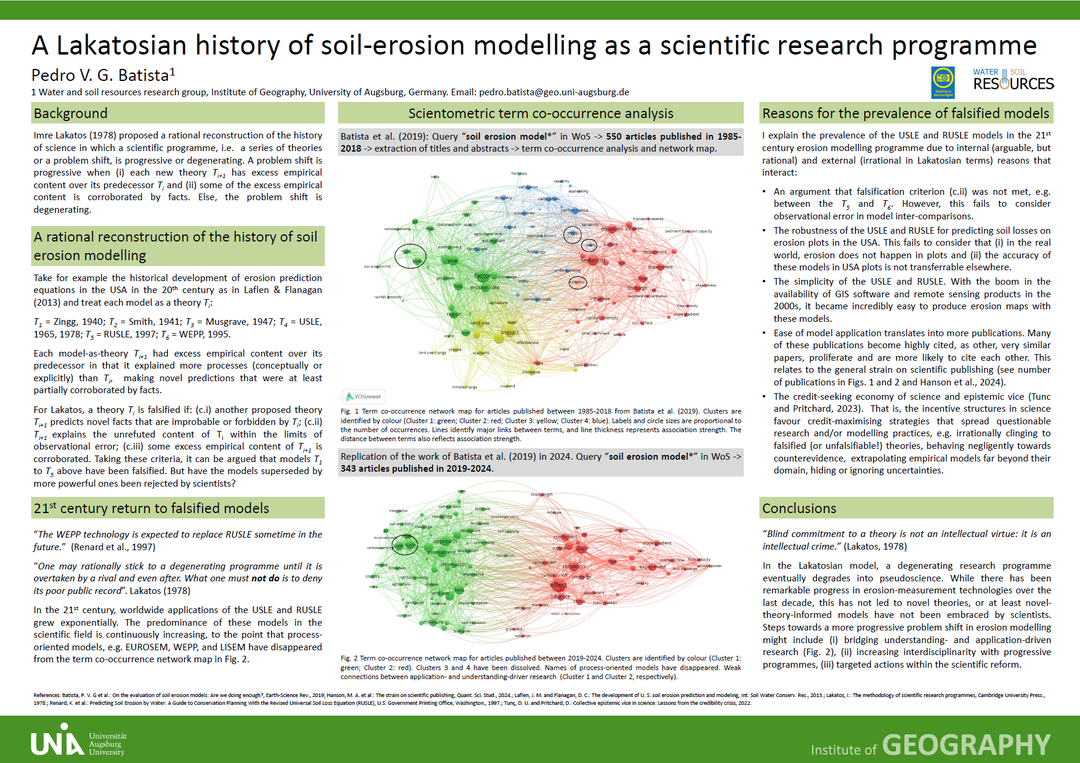Poster Presentation
Here I employ a Lakatosian theory (Lakatos, 1978) to explain the history of soil-erosion modelling as a research programme that went through a progressive phase during the 20th century and early 2000s, with the formulation of novel models with excess empirical content over their predecessors and the prediction of new facts that were corroborated or at least falsifiable by empirical evidence. I argue that the research programme then entered a so-called degenerative phase with an increased prediction of truisms, lack of falsifiability, and theory lagging behind the empirical evidence (Parsons, 2019). ?
ABSTRACT & POSTER
I revisit a scientometric analysis (Batista et al., 2019) using new data that suggests that soil-erosion modelling is becoming increasingly polarised between application- and understanding-driven research clusters, with little connection between experimental work and model applications. Moreover, the scientometric analysis demonstrates a decreasing interest in process-oriented models in favour of USLE-type approaches.
I argue that questionable modelling practices, e.g. extrapolation of empirical models outside their domain and ignoring or hiding uncertainties, have entrained the research programme and are likely to persist without targeted action (Smaldino and O’Connor, 2022). I explain this scenario as being caused by both internal, i.e. related to particular developments in the research programme, and external drivers, e.g. the current incentive structures in science (Tun? and Pritchard, 2022).

